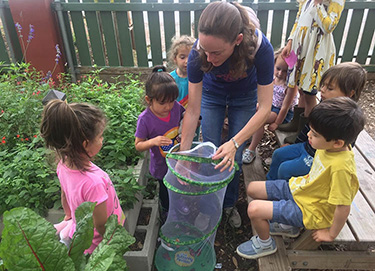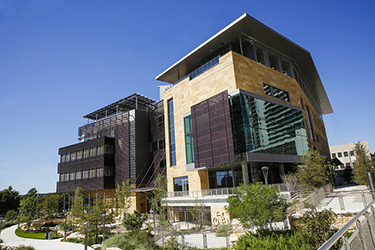Starting school and saying goodbye: Help for children and their grownups
/Marie Catrett has been working with children and families for more than 15 years and has been an occasional guest contributor to this blog since 2012. As founder, teacher, and lead “puddle spaloosher” at Tigerlily Preschool in South Austin, she has deftly guided many families through the process of parting ways for the school day. Thanks to Marie for sharing her expert advice with Alt Ed Austin’s readers just in time for the new school year!
When Dad was taking Jim to school for the first time, Jim said, ‘Will I have a friend at school?’ ‘I think you will,’ said Dad. And Dad smiled down at him.
In the big schoolroom Dad said, ‘Goodbye.’ Jim didn’t say anything. He didn’t want to say goodbye. ‘Come Jim,’ the teacher said.
—Will I Have a Friend? by Miriam Cohen
Starting school can feel like such a leap of faith for parent and child. If you’re anxious about the transition, let’s take a deep breath together and look at some ways to help. Welcome to preschool!
My teaching year begins with the work of welcoming young children and their families into our school program. Everyone is excited, nervous, and maybe even a little sad thinking about this transition, about saying goodbye. Stepping into a new space is hard work for both the children and the grownups. Everyone new to each other: new school, getting to know and trust a new teacher, navigating a change in morning routine. All these pieces will become familiar with practice, but in the beginning everything feels so unfamiliar.
Marie Catrett and Tigerlily Preschool alum Willa
During the week before school begins, children first come with a parent for a one-on-one visit with me in the new space. “Hello,” I say gently, “my name is Marie. It’s so nice to meet you.” I’m a welcoming, gentle presence, letting my energy meet them where they are. “This is a very informal visit,” I explain to the parents. “We really don’t have an agenda at all except to invite the children to start checking things out, to be curious.” I’m eager to see what sort of things these three- and four-year-olds are interested in. Some kids race around touching everything, maybe talking a mile a minute. Another child might perch on the edge of his mom’s lap, taking it all in much more slowly. Either approach—and everything in between—is most welcome. We are saying our first hello to each other.
On the second visit the children come again with their parents in a small group for a playdate-style visit, seeing me and the classroom again, and starting to get to know the other children. We might return to a favorite activity from their first visit, put away some personal items in their cubby, or check out the all-important bathroom. As the children continue to explore, I am checking in with their parents: how are you feeling about goodbye?
Goodbyes will happen on the children’s next trip to Tigerlily, their first day of school. Sometimes separation feels like the hardest thing we’ll do together. Growth sure can feel uncomfortable: all that change, all that new, but when a child works through separation, they build new connections, confidence in themselves, and we should trust in their ability to step out into a supportive and ever expanding world. The same can be true for the grownups. As our child works through the goodbye process, we’re growing as parents, too. Starting school is kind of our first goodbye. We promise a three-year-old we will return, always, and our experience together of separation and coming back becomes a sturdy base for future comings and goings, transitions of all kinds for the rest of our lives.
Here’s what I know: I expect that at some point in the year every child will go through a period of having some hard goodbyes. Some children have their rough patch right at the start of school. Letting the person you love most go away IS sad. Another child may bounce into the room, barely looking back as their parent tries to be heard: “Goodbye, goodbye? Honey, mama’s leaving now. . . . ” Then in a few weeks or months, boom! a period of some sad goodbyes because sleep has been off, breakfast was too rushed, or it is a gloomy day so staying in bed with pajamas and lovies and pancakes just sounds a whole lot better.
As the teacher I’m ready to support this transition with a lot of love and some very good tools to help us get through the hard work of goodbye and on to the other side of having a wonderful time together.
Some suggestions:
1. Don’t start too soon.
Try not to process the upcoming start of school too far in advance. The weeks and weeks and weeks of summer are too long for young children to think and worry about an upcoming transition. A few days is just right. I would wait to talk in great detail about school until there has been an actual visit to the new place because then you can talk about specific details, and that’s so helpful and reassuring to young children. “Yes, you have a hook with your name on it for your new backpack, don’t you? And we saw the place you’ll put your lunchbox. I remember how much you liked those swings. . . . ”
2. Talk to the teacher.
Have a conversation with your child’s teacher about what goodbye will look like with your child. After several getting-to-know-each-other visits, we have some sense of each other, and you can share your best guess of how saying goodbye will go for your child. And you might, happily, be surprised! Do ask: What does support here look like for a child who is having a hard time? I believe that children are fully entitled to feel what they feel. Part of my job is helping a child access ways to express those feelings in appropriate and ultimately helpful ways.
3. Build a routine.
A goodbye routine is a structured plan that x, y, z, will happen and then it will be time for goodbye. Something like “We’ll get to school, put your lunchbox on the blue shelf, then go out to the swings. Then Dad will get a big hug, say goodbye, and see you right after lunch.” Keep it simple.
4. Make your routine and stick to it.
Having a dependable sequence of events will help you both navigate the morning. After your child has gone through the routine a few times, it becomes familiar and predictable, two things that really help children with anxiety. I encourage parents to stick with their routine even (and especially!) through a hard goodbye. Your routine can be a kind of guide rope, a path to follow when things feel hard. Give it a few days. It will get better.
When we talk about respecting feelings, that’s pretty easy with the good ones: excitement, joy, curiosity, contentment. But I think it’s essential that the hard stuff get honored too: sadness, fear, anger, worry. All of the feelings—the entire rainbow of them—are okay to feel and express, even the hard ones.
In my room we dance for our joy, singing the names of the people we love: Mama, Papa, Murphy the dog. We talk about what’s going on. If somebody’s angry: I see you’re so mad he crashed your block tower, but I can’t let you hit him. Let’s make some more space to work, and I’ll help you tell him that you don’t want him to crash your tower ever again. If somebody’s sad: You know what, yesterday when you had that sad time before story I remember you and I rocked in the rocking chair together and pretty soon you felt much better, and then you painted about the sunflower. You could have some more rocking today to help yourself feel better.
Here it is okay to feel sad. Sadness is part of being a person. When we can feel our sadness and talk about it, we create a safe place to be who we are, together, and to notice the many options available to us to help get to feeling better. Going through the hard part is what gets you to the better place. We’re learning how to take good care of ourselves and each other and all our other learning happens from there.
Here’s what teacher support during a hard goodbye can look like:
- Recognize what the child is feeling. “You’re feeling really sad to say goodbye.”
- Validation. “Yes, it was hard to say goodbye to Mama this morning. You really miss her, and she loves you so much.”
- Offer comfort. “I’m here to help, and I promised your grownups I would take very good care of you while you are at school. May I hold you / read you a story / see about some more pushes on the swing?”
- Explain what’s happening, emphasizing the parent’s return. “We’re going to play outside and have some snack, and you know what, Mama will be right back for you after lunch. Mama always comes back.”
- Help engage the child with activity. “Yesterday you were so busy with digging in the sandbox, shall we go see if the buckets and shovels are out?”
Speaking on behalf of early childhood teachers everywhere, I want worried parents to know that after you leave a sad kid, they almost always get much better very quickly! Staying on and extending goodbye in the hopes that by doing more things you’ll then be able to depart without tears makes total sense to me in my parental heart, but as the teacher what I see most often is that on a hard morning, when the parent chooses to delay leaving over and over again, the child’s anxiety continues to grow and grow. I ask parents to stay until they are confident in my ability to take care of their child, and then go ahead and say goodbye and leave, knowing that I will be right there to use my very good tools to help. Things are almost always better very quickly, but if they ever should not be—if within a few minutes I am not able to comfort a child and help them to engage in something wonderful—I’m in touch with the parent to check in and consider any adjustments needed to our transition plan.
So: Deep breaths; things are going to be okay. We are all doing such important growing!
When your child has moved through their hard goodbye period, and separation does in fact go more smoothly, there’s a powerful story we can help them notice about themselves. “You know what, when you first started school everything was new and it was pretty hard to say goodbye, but you got some help and cheering up, and pretty soon we figured out how to do ten pushes on the swing and a great big hug, and now you know I always come back right after lunch.” When we help children to tell the story of their own growth, these messages help them tackle the other hard things. “Pretty soon you knew all about preschool after you did it some. Now you know ALL about it and are ready to graduate, and you know what? Starting kindergarten will be like that.”
Instead of making the goodbye process about avoiding tears, let’s focus on authentic feelings, being present to the child’s experience, and our confidence that children are capable of doing this important work.
Marie Catrett


























